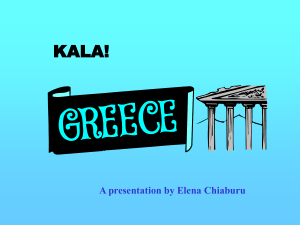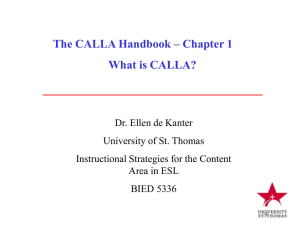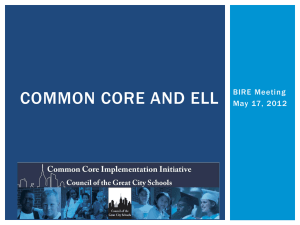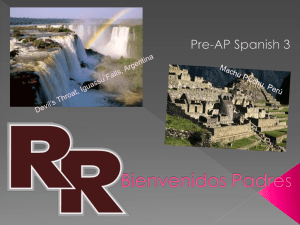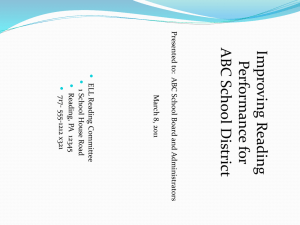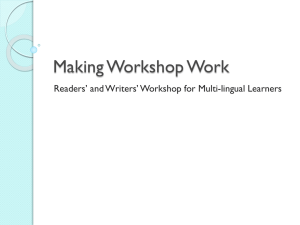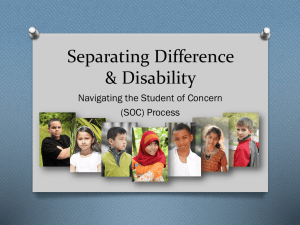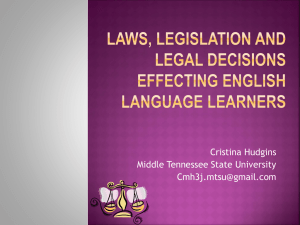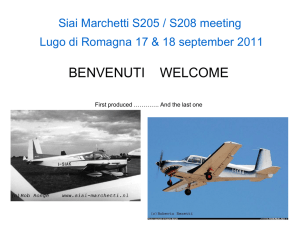From Teaching to Learning
advertisement
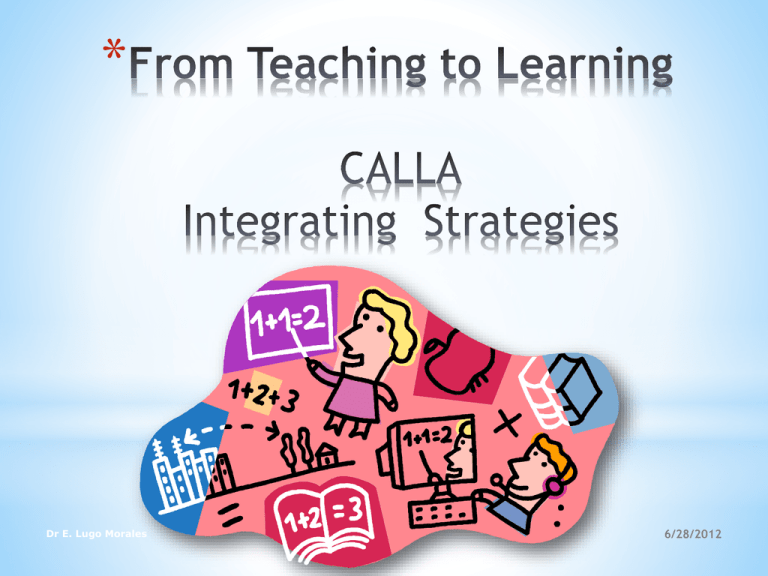
* Dr E. Lugo Morales 1 6/28/2012 * •Develop academic vocabulary •Read to acquire new information •Understand information presented orally •Participate in classroom discussions •Write to communicate their knowledge and ideas Dr E. Lugo Morales 2 * *that the best way to improve English is by : * listening to the language from different contexts * reading from different *talking sources about topics that they can relate to *searching for answers to their concerns *reacting to different learning situations from their own perspective. *sharing with others their talents and interests 3 Dr E. Lugo Morales 6/28/2012 * “Shifting the focus from teaching to learning” CALLA The Cognitive Academic Language Learning Approach (CALLA) is an instructional model for second and foreign language learners based on cognitive theory and research. CALLA integrates instruction in priority topics from the content curriculum develops the language skills needed for learning in school focuses on explicit instruction using learning strategies for academic tasks. The goals of CALLA are for students to learn essential academic content and language and to become independent and self-regulated learners through their increasing command over a variety of strategies for learning in school. CALLA can be used in ESL, EFL, bilingual, foreign language, and general education Dr E. Lugo Morales classrooms. 5 The CALLA Model: Strategies for ELL Student Success p. 16 ©2005 6/28/2012 Chamot & Robbins CALLA's principal objectives are to assist students in: • Valuing their own prior knowledge and cultural experiences • Learning the content knowledge and the language skills • Developing language awareness and critical literacy • Selecting and using appropriate learning strategies and study skills Dr E. Lugo Morales • Developing abilities to work successfully with others in a social context • Learning through hands-on, inquiry-based, and cooperative learning tasks • Increasing motivation for academic learning and confidence in their ability to be successful in school • Evaluating their own learning and planning how to become more effective and independent learners The CALLA Model: Strategies for ELL Student 6 Success p. 16 ©2005 Chamot & Robbins 6/28/2012 * Cognitive-Social Learning Social context and interaction Authentic Learning Linked to student’s prior experiential and cultural knowledge Language development through content across all curriculum areas Academic Language Learning Strategies Dr E. Lugo Morales 7 6/28/2012 PREPARATION EXPANSION CALLA’S FIVE PHASES PRESENTATION EVALUATION PRACTICE * The CALLA Model: Strategies for ELL Student Success p. 16 ©2005 Chamot & Robbins Dr E. Lugo Morales 8 6/28/2012 * Dr E. Lugo Morales • Provide overview and objectives • Elicit students’ prior knowledge • • Develop vocabulary • Remind students to use the learning strategies they know Help students make connections The CALLA Model: Strategies for ELL Student Success p. 16 ©2005 Chamot & 9 Robbins 6/28/2012 * • Address different learning preferences • Model reading and writing processes explicitly • Explain learning strategies • Discuss connections to students’ prior knowledge The CALLA Model: Strategies for ELL Student Success The CALLA Model: p. 16 ©2005 Chamot & Robbins Strategies for ELL Dr E. Lugo Morales Student Success p. 16 ©2005 Chamot & Robbins 6/28/2012 * • Use interactive activities • Use authentic content and language tasks • Ask students to use learning strategies Dr E. Lugo Morales The CALLA Model: Strategies 11 for ELL Student Success p. 16 ©2005 Chamot & Robbins 6/28/2012 * • • • Student metacognition Self-assessment Teachers evaluate students’ achievement Dr E. Lugo Morales The CALLA Model: Strategies for ELL Student Success p. 16 ©2005 Chamot & Robbins 12 6/28/2012 * Dr E. Lugo Morales • Students apply what they have learned to their own lives • Students extend their understanding to other content areas • Students relate new information to their own experience The CALLA Model: Strategies13 for ELL Student Success p. 16 ©2005 Chamot & Robbins 6/28/2012
